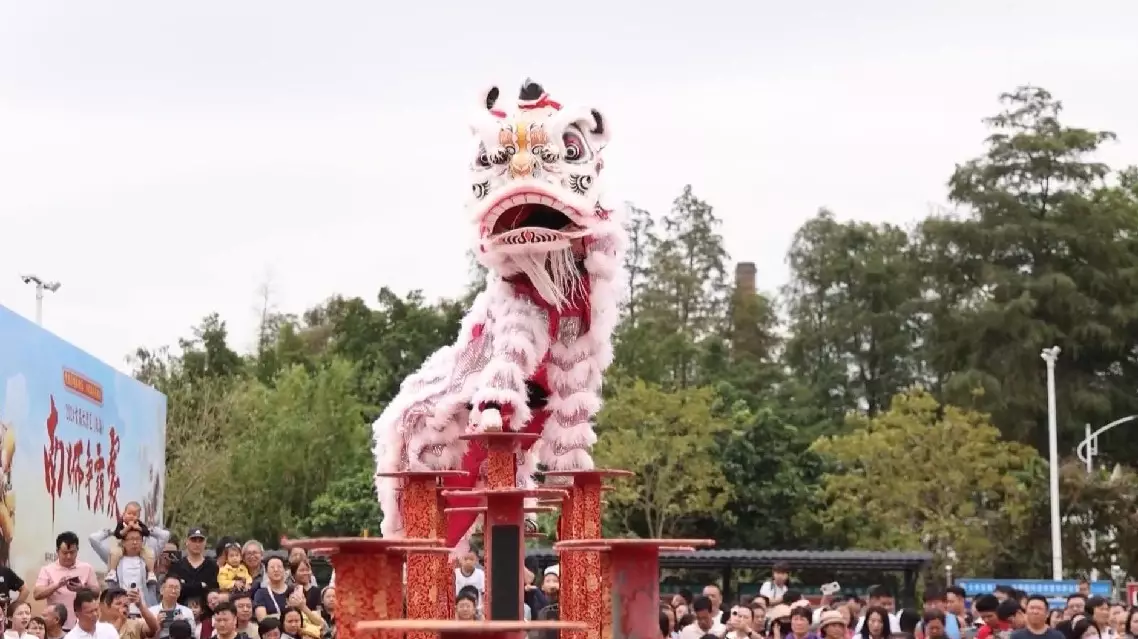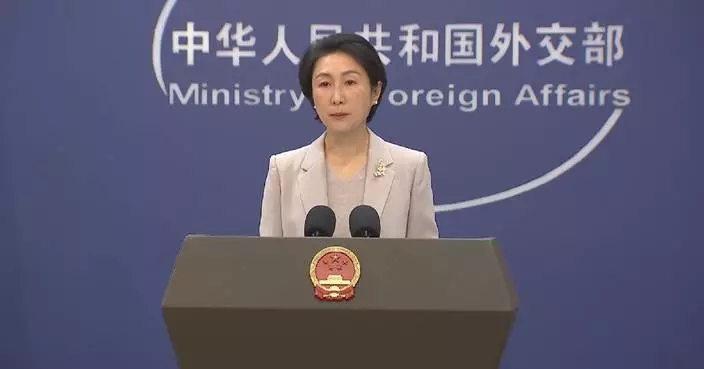The first awakening lion competition of the Guangdong-Hong Kong-Macao Greater Bay Area in south China took place on Saturday in Zhuhai City of Guangdong Province, showcasing the vibrant southern style of the lion dance while fostering sports cooperation and exchanges within the Greater Bay Area.
The competition in Shangzhou Village of Doumen District, featuring two events -- the traditional event and the high-pole event -- was participated by 14 lion dance teams from cities in the Greater Bay Area city cluster.
The Greater Bay Area consists of the Hong Kong Special Administrative Region, the Macao Special Administrative Region, as well as nine cities in Guangdong Province -- Guangzhou, Shenzhen, Zhuhai, Foshan, Huizhou, Dongguan, Zhongshan, Jiangmen and Zhaoqing. China plans to vigorously develop the Greater Bay Area into a world-class bay area and a top international city cluster as an important driver for national economic growth. The high-pole event kicked off following the opening ceremony at 10:00. Accompanied by the resounding beats of drums and gongs, lion dancers from five teams took turns showcasing thrilling jumps and somersaults on high poles.
The high-pole event particularly tested the skills and coordination of team members, with the high level of difficulty in their movements earning cheers from the spectators.
"I think it's quite good. It can promote the culture of lion dance from the south," said a resident.
"I hope these cultures can be brought to various regions, so that in the future, the competition won't just be held in Doumen," said another resident.
The traditional event, with the participation of 11 teams, commenced in the afternoon.
The members of each team, whether at the lion head or tail, displayed seamless coordination as they lively mimicked lion actions such as licking fur, scratching, and swaying, captivating the spectators and showcasing the rich diversity and profound heritage of the awakening lion culture.
Following intense competition, teams from Shenzhen and Foshan respectively secured the gold medals in the high-pole and traditional events.
"Many teams have come to participate in this competition and they are very enthusiastic," said Jiang Mingchu, a member of the Shenzhen champion team.
Teams from Hong Kong and Macao were also invited to the competition. By promoting cultural cooperation and exchanges within the framework of the lion dance culture of the Greater Bay Area, the event is expected to further enhance sports cooperation and exchanges between Guangdong, Hong Kong, and Macao.
"Let's communicate together, hoping for more events like this in the future to build a platform together," said Windy Lou, chief of the Sport for All and Special Projects Division of the Macao Sport Development Board.
Awakening lion dance has a historical origin tracing back to a court dance in the Tang Dynasty (618-907). With the migration of people from the central plains towards the south, the lion dance culture was introduced to southern regions. During the Ming Dynasty (1368-1644), the awakening lion dance emerged in Guangdong and gradually spread throughout southern China and even overseas. Today, the lion dance has become a very important part of Chinese culture.

1st awakening lion competition of Greater Bay Area held in Zhuhai









